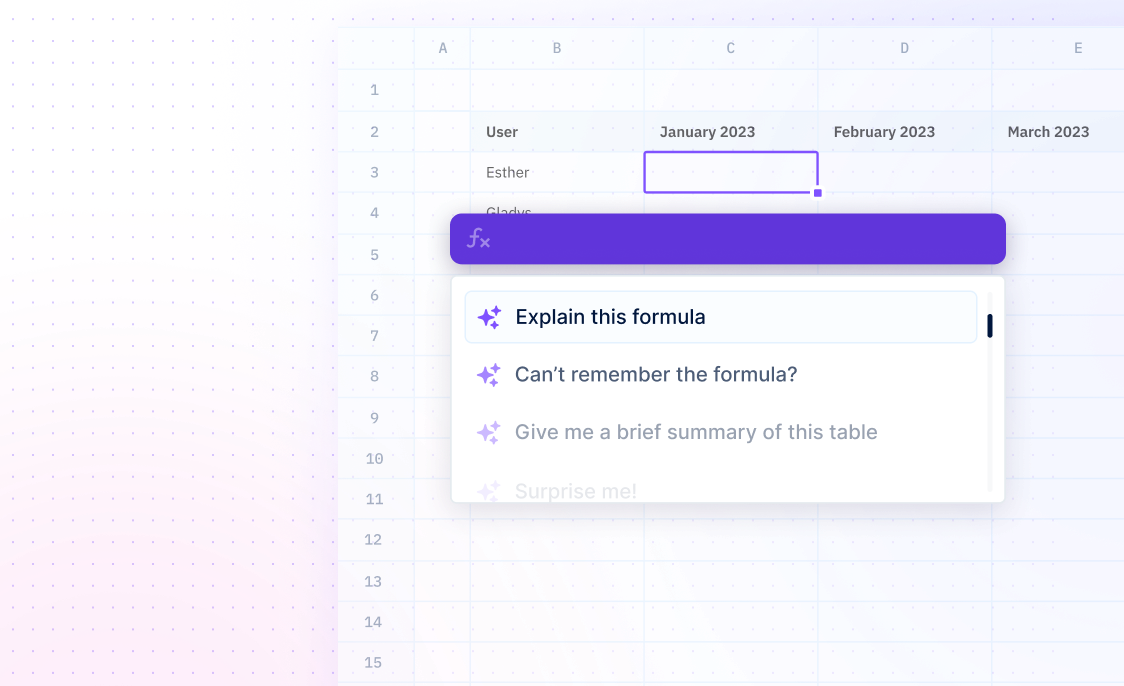
LOGEST
Formulas / LOGESTCalculate an exponential curve using data.
=LOGEST(known_y's, [known_x's], [const], [stats])
- known_y's - an array or cell range with the same dimensions as known_x's
- known_x's - an array or cell range with the same dimensions as known_y's
- constant - [OPTIONAL] an array of the same size as known_x's
- statistics - [OPTIONAL] an array of the same size as known_x's which contains the values of sums of squares, r-squared, f-statistic, and standard errors of the regression coefficients.
Examples
=LOGEST(B2:B10)In this example, the LOGEST function is used to perform an exponential regression analysis on a set of data points in the range B2:B10. The function returns the parameters of the exponential model "y = b * m^x," where "b" is the base of the natural logarithm of the constant term, and "m" is the base of the natural logarithm of the growth factor. The formula returns the value of "m," the growth factor, which can be used to predict future values based on the exponential model.
=LOGEST(B2:B10, A2:A10, TRUE, TRUE)In this example, the LOGEST function is used to perform an exponential regression analysis on a set of data points with known Y-values in the range B2:B10 and known X-values in the range A2:A10. The third argument (TRUE) specifies that the constant term "b" should be calculated, and the fourth argument (TRUE) specifies that additional regression statistics should be returned. The formula returns an array of values, including the growth factor "m," the constant term "b," and additional regression statistics such as the coefficient of determination (R-squared).
Summary
The LOGEST function is used to calculate an exponential curve using data and returns an array of values which describe the curve's shape. It must be entered as an array formula in Microsoft 365.
- The LOGEST function must be entered as an array formula and returns an array of values which describe a curve.
- When used in Microsoft 365, the LOGEST function must be entered as an array formula.
Frequently Asked Questions
What is the LOGEST function?
What is the syntax for the LOGEST function?
What is the size of the array for the LOGEST function?
What are the arguments of the LOGEST function?
- known_y's: the range of dependent data
- known_x's: the range of independent data
- [const]: a logical value that specifies whether to force the constant b0 to equal to 0 (FALSE) or not (TRUE)
- [stats]: a logical value that specifies whether to return additional regression statistics
What are the return values of the LOGEST function?
- the slope of the regression line
- the y-intercept of the regression line
- the coefficient of determination (r-squared)
- the standard error of the estimate
- the F-test and its p


